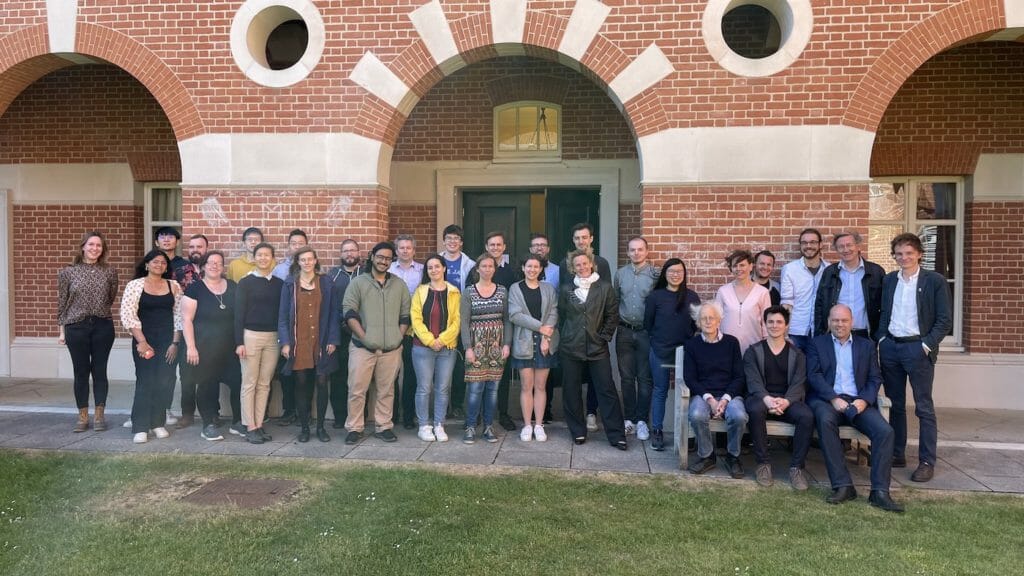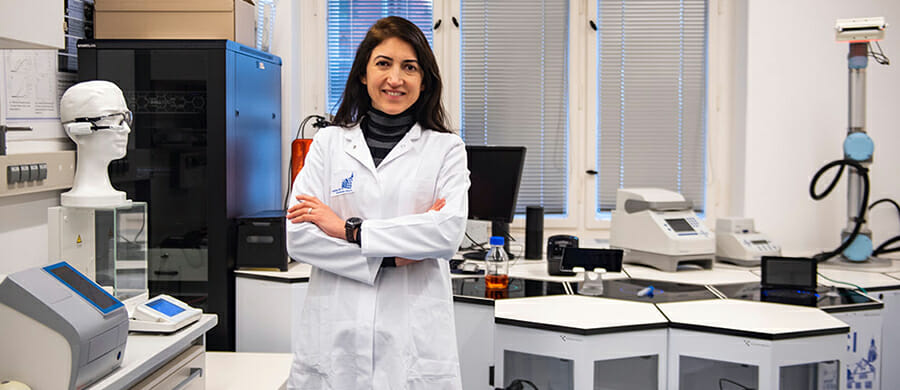CARL VON OSSIETZKY UNIVERSITY OLDENBURG
Institute of Biology and Environmental Sciences. AG Neurosensorik/Animal Navigation
DATA & FACTS
Project
QuantumBirds (2019-2025)
Scientific contact
Prof. Henrik Mouritsen – Universität Oldenburg Prof. Peter Hore, Universität Oxford
EU-Funding line
ERC-Synergy-Grant
Projektleitung: Prof. Dr.-Ing. Arno Kwade
Projektname: „Li-Ion Pilot Lines Network“ (LiPLANET)
Keywords: Energie, Mobilität, Partner
QuantumBirds – On the trail of the magnetic sense
Quantum sense in migratory birds
On the trail of the magnetic sense: Henrik Mouritsen (University of Oldenburg) and his British colleague Peter Hore(University of Oxford) have been conducting research since 2019 as part of the ERC Synergy Grant QuantumBirds. The project aims to understand how the magnetic sense in migratory birds works and has already made several breakthroughs, including a study showing that a protein from the eyes of night-migratory songbirds is actually magnetically sensitive based on a quantum mechanical mechanism. This study was published as the cover story in 2021 in Nature. (YouTube)
How birds sense the Earth’s magnetic field is one of the most exciting unsolved questions in biology. While humans perceive the world mainly with five senses – sight, hearing, taste, smell and touch – many animals also orient themselves using the Earth’s magnetic field. With the QuantumBirds project, Mouritsen and Hore and their teams and colleagues want to find out whether highly sensitive quantum processes based on spins of unpaired electrons in so-called radical-pairs actually form the crucial components of migratory birds’ perception of the Earth’s magnetic field. As part of the ERC grant, the interdisciplinary team from the Universities of Oldenburg and Oxford (UK) has gathered evidence that the magnetic sense of migratory birds such as robins is based on a specific light-sensitive protein in the eye. The protein cryptochrome 4, which is found in the retina of birds, reacts sensitively to magnetic fields and is likely to be the long-sought-after quantum mechanical magnetic sensor in night-migratory songbirds.
To understand quantum chemical processes in biology, interdisciplinary cooperation is essential. The QuantumBirdsproject brings together physical and quantum chemists with biochemists and molecular, neuro and behavioural biologiststo understand how light energy creates an unstable system with two unpaired electrons that is magnetically sensitive for about a millionth of a second during which the chemical fate of the molecule is decided. The reaction yield of this reaction, according to a theory initiated as early as 1978 by the German biophysicist Klaus Schulten, depends on the direction of the Earth’s magnetic field. The principles studied in their research project is related to the challenges faced inquantum computing and could help develop novel biological sensors.
Much of the research in the QuantumBirds project is based on proteins produced in cell cultures, but the results of the project will also contribute to bird conservation. In 2014, the Mouritsen/Hore team demonstrated that even weak antropogenic electromagnetic radiation can confuse the magnetic sense of migratory birds. However, it remains unclear why. “If we understand the quantum mechanical causes of the disruptive effects of man-made electromagnetic radiation, we can better protect migratory birds from its adverse effects,” Mouritsen is convinced.
The ERC Synergy Grant funds teams of two to four outstanding scientists and aims to enable groundbreaking discoveries at the interfaces between established disciplines, such as biology and physical chemistry in this case. Mouritsen and Hore received joint funding from the European Research Council (ERC) totalling around 8.6 million euros for their QuantumBirds project. The project is coordinated at Oxford University by Rachel Henning.

Author:
Beate Grünberg
Date:
28.06.2022
This might also interest you …

Projekt: BITS – BICyCLES and its
Bicycles and ITS (BITS) – A new multi stakeholder project on Bicycle and ITS (Intelligent Transport Systems) aiming to reduce CO2 emissions by 9% and increase bicycle use by 10% within target groups! A modal shift to green transport is urgently needed as congestion, pollution, growing population and health problems threaten the livability of urban areas…

Project: decades
The chemical industry is currently facing the challenging transformation of replacing classic, chemical manufacturing processes based on petroleum with sustainable, bio-based products, in line with the concept of a circular bioeconomy. Solvents, in particular, play a crucial role in the chemical industry along the entire production chain.

